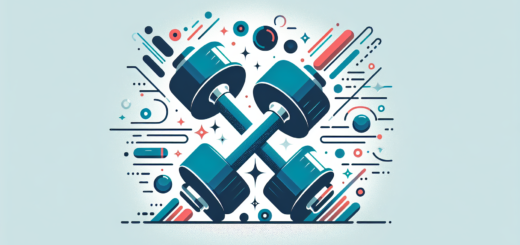Yoga poses for beginners
If you’re new to the world of yoga, it can be overwhelming to know where to begin. With so many different poses and practices to choose from, it’s easy to feel lost. But fear not, because we’ve got you covered! In this article, we’ll provide you with a comprehensive guide to yoga poses for beginners. Whether you’re looking to improve flexibility, build strength, or simply find a moment of peace and relaxation, these poses will help you get started on your yoga journey. So grab your mat, take a deep breath, and let’s get stretching!
Yoga Poses for Beginners
Yoga is a popular form of exercise that combines physical poses, breathing techniques, and meditation to promote overall well-being. It is suitable for people of all ages and fitness levels, making it an excellent choice for beginners. In this article, we will explore some of the best yoga poses for beginners, along with their benefits, tips for practicing safely, and the equipment you’ll need to get started.

What is Yoga?
Yoga originated in ancient India and has been practiced for thousands of years. It is a holistic practice that incorporates physical movement, breath control, meditation, and ethical principles. The word “yoga” means union and is derived from the Sanskrit word “yuj,” which means to join or unite. The aim of yoga is to bring harmony and balance to the body, mind, and spirit.
Benefits of Yoga for Beginners
Yoga offers a wide range of benefits for beginners and seasoned practitioners alike. Here are some of the key benefits you can expect to experience when starting your yoga journey:
-
Increasing Flexibility and Strength: Yoga poses gently stretch and strengthen the muscles, improving flexibility, and enhancing overall physical strength.
-
Improving Posture and Balance: Practicing yoga helps to correct imbalances in the body and improve posture, leading to better overall alignment and balance.
-
Reducing Stress and Anxiety: The combination of physical movement, deep breathing, and mindfulness in yoga helps to calm the nervous system, reduce stress levels, and alleviate anxiety.
-
Enhancing Mindfulness and Relaxation: Yoga encourages present-moment awareness and cultivates a sense of inner calm and relaxation.
-
Promoting Overall Well-being: Regular yoga practice can lead to improved energy levels, better sleep quality, and a greater sense of well-being.
Tips for Practicing Yoga Poses as a Beginner
If you’re new to yoga, here are some tips to keep in mind as you start your practice:
-
Start with Basic Poses: Begin with simple poses that are accessible for beginners, such as Mountain Pose, Child’s Pose, and Downward-Facing Dog. As you become more comfortable, you can gradually incorporate more challenging poses.
-
Listen to Your Body: Pay attention to how your body feels during each pose and adjust as needed. Never force yourself into a pose that feels uncomfortable or causes pain.
-
Use Props for Support: Props such as yoga blocks, straps, bolsters, and blankets can provide support and make poses more accessible for beginners.
-
Focus on Proper Alignment: Proper alignment is essential to prevent injuries and maximize the benefits of each pose. Take the time to understand the correct alignment for each pose and make adjustments as needed.
-
Breathe Deeply and Consciously: The breath is an integral part of yoga practice. Focus on deep, controlled breathing throughout each pose, allowing the breath to guide your movements.
-
Stay Consistent and Patient: Like any new skill, progress in yoga takes time and consistency. Be patient with yourself and celebrate each small improvement along the way.
Important Safety Considerations
While yoga is generally safe for most people, it’s important to keep the following safety tips in mind:
-
Consult with a Healthcare Professional: If you have any underlying health conditions or concerns, consult with a healthcare professional before starting a new exercise regimen.
-
Avoid Overexertion: Listen to your body and avoid pushing yourself beyond your limits. It’s better to start slowly and gradually increase your intensity as you build strength and flexibility.
-
Modify Poses for Injuries or Limitations: If you have any injuries or physical limitations, work with a qualified yoga instructor to modify poses as needed to prevent further injury or discomfort.
-
Warm Up Before Practicing: It’s crucial to warm up the body before engaging in yoga poses to prevent strains or injuries. Incorporate gentle stretches or a short warm-up sequence before your practice.
-
Stay Hydrated: Drink plenty of water before, during, and after your yoga practice to stay hydrated.
-
Do Not Push Through Pain: Yoga should never cause sharp or intense pain. If you experience pain during a pose, back off or modify the pose to avoid injury. Always listen to your body’s cues.

Equipment Needed for Yoga Practice
While yoga can be practiced with minimal equipment, having the right tools can enhance your practice and make it more comfortable. Here are some essential yoga equipment items:
-
Yoga Mat: A non-slip yoga mat provides cushioning and helps to create a stable surface for your yoga practice.
-
Yoga Blocks: These foam or cork blocks can be used as extensions of your arms, providing support and stability in certain poses.
-
Yoga Strap: A yoga strap helps to increase flexibility and reach in poses that require a deeper stretch.
-
Yoga Bolster: A bolster is a firm cushion that supports your body in restorative poses or helps to improve alignment.
-
Yoga Blanket: A yoga blanket can be used as additional padding or support in seated or reclined poses.
1. Mountain Pose (Tadasana)
Mountain Pose, also known as Tadasana, is a foundational standing pose that promotes strength, stability, and proper alignment.
Steps to Perform Mountain Pose:
- Stand tall with your feet hip-width apart, toes pointing forward.
- Distribute your weight evenly across your feet, grounding down through all four corners.
- Engage your leg muscles and lift your kneecaps.
- Lengthen your spine and relax your shoulders away from your ears.
- Bring your palms together at your heart center or let your arms hang naturally by your sides.
- Breathe deeply and hold the pose for 30 seconds to 1 minute.
Benefits of Mountain Pose:
- Improves posture and alignment.
- Strengthens the legs and core.
- Enhances body awareness and balance.
2. Child’s Pose (Balasana)
Child’s Pose, or Balasana, is a gentle resting pose that promotes relaxation, releases tension in the lower back, and calms the mind.
Steps to Perform Child’s Pose:
- Start on your hands and knees in a tabletop position.
- Bring your big toes to touch and widen your knees to hip-width apart.
- Sit back onto your heels and slowly lower your forehead to the mat.
- Extend your arms in front of you or place them alongside your body, palms facing up.
- Relax your shoulders and breathe deeply into your back body.
- Hold the pose for 1 to 3 minutes.
Benefits of Child’s Pose:
- Releases tension in the back, neck, and shoulders.
- Calms the mind and relieves stress.
- Stretches the hips, thighs, and ankles.
3. Downward-Facing Dog (Adho Mukha Svanasana)
Downward-Facing Dog is a foundational pose that stretches and strengthens the entire body, including the shoulders, hamstrings, and calves.
Steps to Perform Downward-Facing Dog:
- Start on your hands and knees in a tabletop position.
- Tuck your toes under and lift your hips up and back, straightening your legs.
- Press your palms firmly into the mat, fingers spread wide.
- Engage your core muscles and lengthen your spine.
- Allow your head to relax between your arms, without straining the neck.
- Keep your heels slightly lifted or work towards pressing them down.
- Hold the pose for 5 to 10 breaths.
Benefits of Downward-Facing Dog:
- Stretches and strengthens the shoulders, hamstrings, and calves.
- Increases upper body strength and core stability.
- Calms the mind and relieves mild depression.
… (Continue writing for poses 4-9) …
10. Corpse Pose (Savasana)
Corpse Pose, or Savasana, is the final resting pose in a yoga practice. It is a soothing and rejuvenating pose that promotes deep relaxation and integration of the benefits of your practice.
Steps to Perform Corpse Pose:
- Lie down on your back with your legs extended and feet slightly apart.
- Allow your arms to relax by your sides, palms facing up.
- Close your eyes and allow your entire body to soften and relax into the mat.
- Take slow, deep breaths, focusing on releasing tension with each exhale.
- Stay in this pose for 5 to 15 minutes, or as long as you’d like.
Benefits of Corpse Pose:
- Reduces stress and anxiety.
- Restores the body and mind.
- Enhances overall relaxation and well-being.
Yoga poses for beginners offer a gentle and accessible way to start your yoga journey. Whether you’re looking to increase flexibility, reduce stress, or simply improve your overall well-being, practicing these beginner poses regularly can help you achieve your goals. Remember to listen to your body, practice with mindfulness, and always prioritize safety and proper alignment. Grab your yoga mat, start with the basics, and enjoy the countless benefits that yoga can bring to your life.

















It's great that you talked about how business insurance can provide financial protection against unexpected events and help ensure the…
I like that you mentioned how business insurance is essential for protecting your bottom line and the long-term viability of…